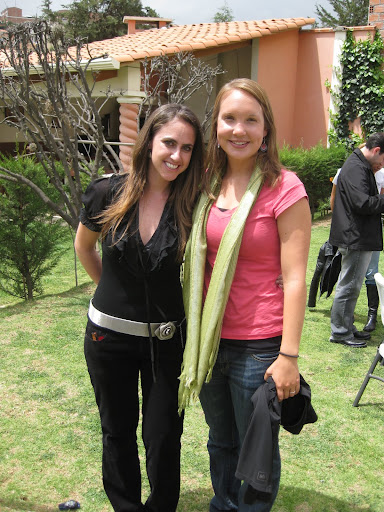La Paz is intense – in a good way. You can’t help but be blown away before even getting off the bus because you enter the city from above and wind your way down into the massive valley where the heart of the city is located, underneath the shadow of the 21,122 ft. Illimani Volcano.
 Before you arrive, the guidebooks and a few travelers scare you with stories of complex scams (fake tourist police demanding to see/steal your passport), nasty distractions (someone spilling ketchup or spitting on you and then relieving you of your wallet as you clean yourself up), and corrupt taxi drivers (picking up additional passengers and then “kidnapping” you to an ATM and demanding you remove money). Needless to say, we were a little cautious when we arrived into the craziness that is La Paz.
Before you arrive, the guidebooks and a few travelers scare you with stories of complex scams (fake tourist police demanding to see/steal your passport), nasty distractions (someone spilling ketchup or spitting on you and then relieving you of your wallet as you clean yourself up), and corrupt taxi drivers (picking up additional passengers and then “kidnapping” you to an ATM and demanding you remove money). Needless to say, we were a little cautious when we arrived into the craziness that is La Paz.
I’m convinced that no one from La Paz would be overwhelmed by downtown Manhattan because the semi-organized chaos of La Paz’s streets and sidewalks would have them more than prepared. You constantly have to watch where you are going so as not to run down an old woman or get hit by a car or step in a hole in the sidewalk. But at the same time you want to look anywhere and everywhere all at once. There are people on the side of the streets selling anything from spices, to children’s bath toys, to toilet seats (which are pathetically underused in this country). There are markets that take up blocks and blocks that include practical items such a clothes as well as a witch’s market where you can buy an alpaca fetus, among other items to bring you luck or others harm.
Not only is the city a buzzing and fascinating place, it is surprisingly walkable. We spent several days exploring on foot and could have easily wandered more. We were also looking forward to doing some day trips and trekking in the nearby mountains, but our plans were foiled! One of the most popular day trips to do out of La Paz is to mountain bike the “world’s most dangerous road”. However, when we inquired about the trip in a travel office on our first day in the city, we learn that the access road to both the bike trip and other popular trekking was currently blocked by protesting coca farmers. The government had made an unpopular decision and the result was a road block for an interminable amount of time. Well then!
 As it turns out, we had several contacts and friends of friends to look up in La Paz. Estefania is our friend who lives in Denver and as she is Bolivian, she has lots of friends and family that live here. She put us in touch with her cousin Ale who was an amazing and generous host. Ted and I got to explore parts of the city that folks don’t always venture off to see and we were even invited to brunch with Ale (and Estefania’s) extended family and friends to celebrate her younger sister’s first communion.
As it turns out, we had several contacts and friends of friends to look up in La Paz. Estefania is our friend who lives in Denver and as she is Bolivian, she has lots of friends and family that live here. She put us in touch with her cousin Ale who was an amazing and generous host. Ted and I got to explore parts of the city that folks don’t always venture off to see and we were even invited to brunch with Ale (and Estefania’s) extended family and friends to celebrate her younger sister’s first communion.
Ale and Estafania’s mom (via helpful emails!) also recommended we go see a pena in the city. Penas feature traditional dances and music from local Andean culture. The performance was vibrant and interactive, with the dancers pulling us up on stage, and musicians playing songs from the home country of each visitor (we got an Elvis tune sung for us). Though there were definitely other tourists there, I was surprised that nearly half was room was people from La Paz who had come to see the show.
A huge thanks to Estefania for the introduction, to Ale for taking the time to show us around La Paz and to her family for making us feel welcome!